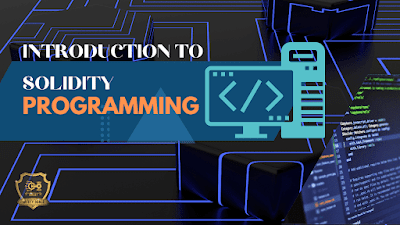Introduction to Solidity Programming. In this article, we will see, Building Smart Contracts on Ethereum, What are Smart Contracts? Developing Smart Contracts with Solidity, and Features of Solidity. In this blog post, we will explore the fundamentals of Solidity, its syntax and features. And how it enables the creation of decentralized applications (dApps) and the execution of smart contracts.
Introduction to Solidity Programming

Understanding Solidity and Its Role in Ethereum
Solidity is a high- level programming language explicitly intended for creating shrewd agreements on the Ethereum blockchain. In this blog entry, we will dive into the basics of Strength programming, investigate its elements, and comprehend how it empowers the formation of decentralized applications (dApps) on the Ethereum stage.
Basics of Solidity Programming
What is Solidity?
Solidity is a statically-typed, contract-oriented language that resembles JavaScript in syntax. It permits engineers to characterize the way of behaving of brilliant agreements, which are self-executing concurrences with predefined rules and conditions. Savvy contracts empower the computerization of exchanges and communications on the Ethereum blockchain, killing the requirement for mediators and expanding straightforwardness and security.
Key Features of Solidity
Data Types: Solidity supports various data types, including integers, booleans, strings, arrays, and custom-defined structures. These data types allow developers to manipulate and store different kinds of information within smart contracts.
Functions and Modifiers: Solidity allows the definition of functions that can be called by external entities. Functions can have parameters and return values, facilitating the execution of specific actions within smart contracts. Additionally, modifiers provide a way to enforce certain conditions before executing a function.
Events: Solidity enables the logging of events within smart contracts. Events are useful for notifying external applications about specific occurrences on the blockchain, providing a way to track and respond to changes.
Inheritance and Libraries: Solidity supports inheritance, allowing developers to create modular and reusable code. Inheritance enables the extension of existing contracts or the creation of contract hierarchies. Libraries, then again, give a method for putting away and reuse ordinarily utilized capabilities.
Developing Smart Contracts with Solidity
Solidity Development Environment
To start developing smart contracts with Solidity, you need a suitable development environment. Popular choices include Remix IDE, Truffle, and Visual Studio Code with Solidity plugins. These instruments give code editors, compilers, and troubleshooting capacities to smooth out the improvement interaction.
Writing Solidity Smart Contracts
Solidity smart contracts are typically written in a ".sol" file. The code structure consists of a contract declaration, followed by state variables, functions, and event definitions. Developers can define constructor functions to initialize contract state variables when the contract is deployed.
Solidity Best Practices and Security Considerations
Solidity Best Practices
While creating with Robustness, it's vital to follow best practices to guarantee code quality, security, and proficiency. Some best practices include using the latest version of Solidity, conducting thorough testing, implementing access control mechanisms, and properly handling error conditions. Additionally, code readability, documentation, and code reuse are essential for maintainable and scalable smart contracts.
Security Considerations
Developing secure smart contracts is crucial to protect user funds and prevent vulnerabilities. Solidity developers must be aware of common security risks, such as reentrancy attacks, integer overflow and underflow, and unhandled exceptions. Proper input validation, careful handling of external calls, and utilizing standardized libraries and frameworks can help mitigate security risks.
Solidity and the Future of Ethereum
Strength assumes a critical part in the development and reception of the Ethereum environment. As Ethereum continues to evolve, Solidity will likely see enhancements, language improvements, and additional features to support more complex dApps. With ongoing research and community contributions, Solidity is poised to remain a vital tool for building decentralized applications and driving the innovation of blockchain technology.
Conclusion
Solidity is a strong programming language that empowers the production of savvy contracts on the Ethereum blockchain. With its highlights, grammar, and advancement apparatuses, Robustness engages engineers to construct decentralized applications that influence the advantages of blockchain innovation. By understanding the basics of Solidity programming, developers can embark on a journey to build innovative dApps, contribute to the Ethereum ecosystem, and shape the future of decentralized finance, supply chain management, and various other industries.




0 Comments